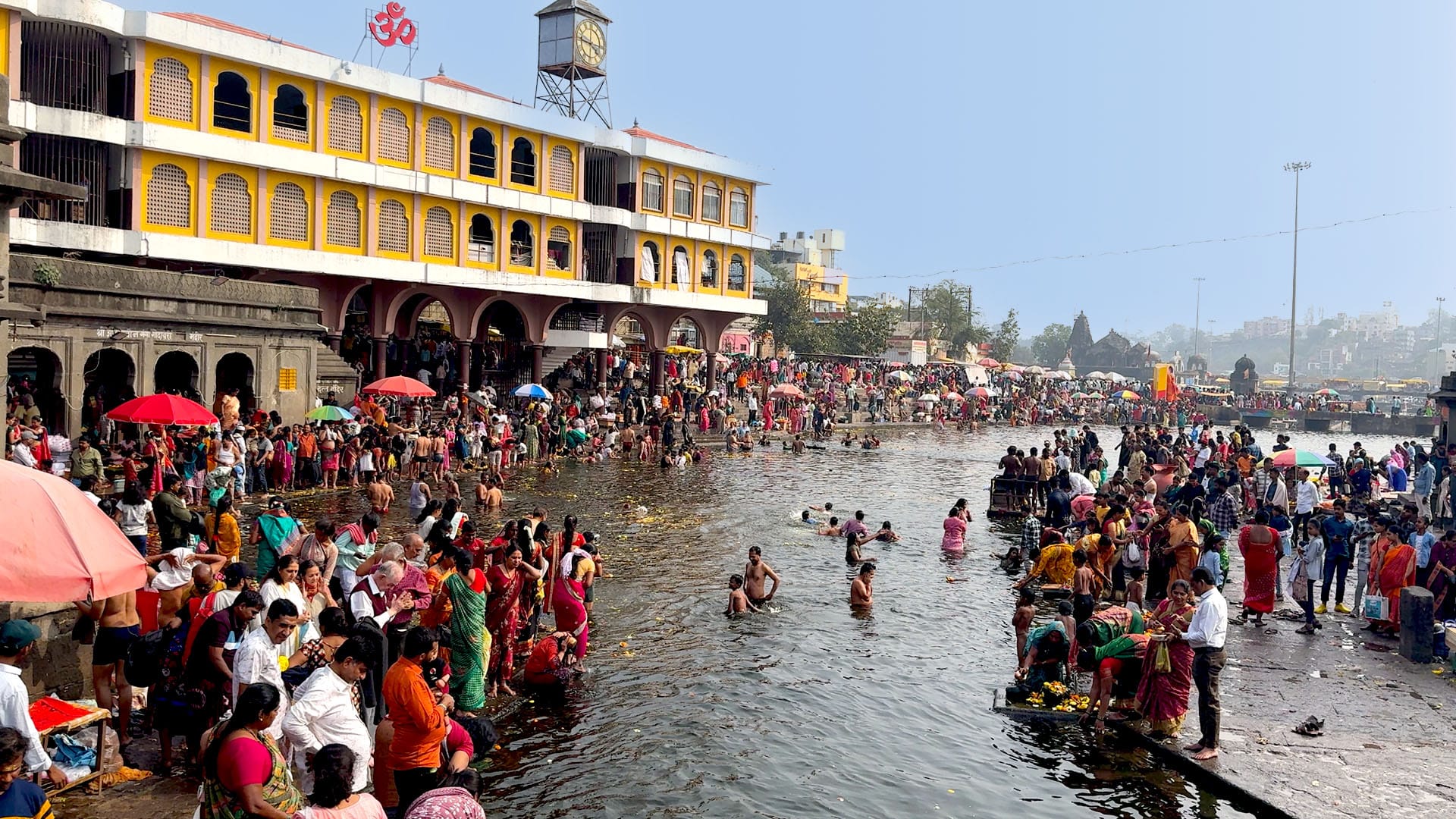Ramkund is a sacred ghat on the banks of the Godavari river where Prabhu Shriram used to bath while living in exile in the spiritually significant region of Panchavati in Nashik city in the state of Maharashtra.
It is the most important Hindu religious destination in the ancient city of Nashik and is visited daily by thousands of devotees from across the country and from abroad as well.
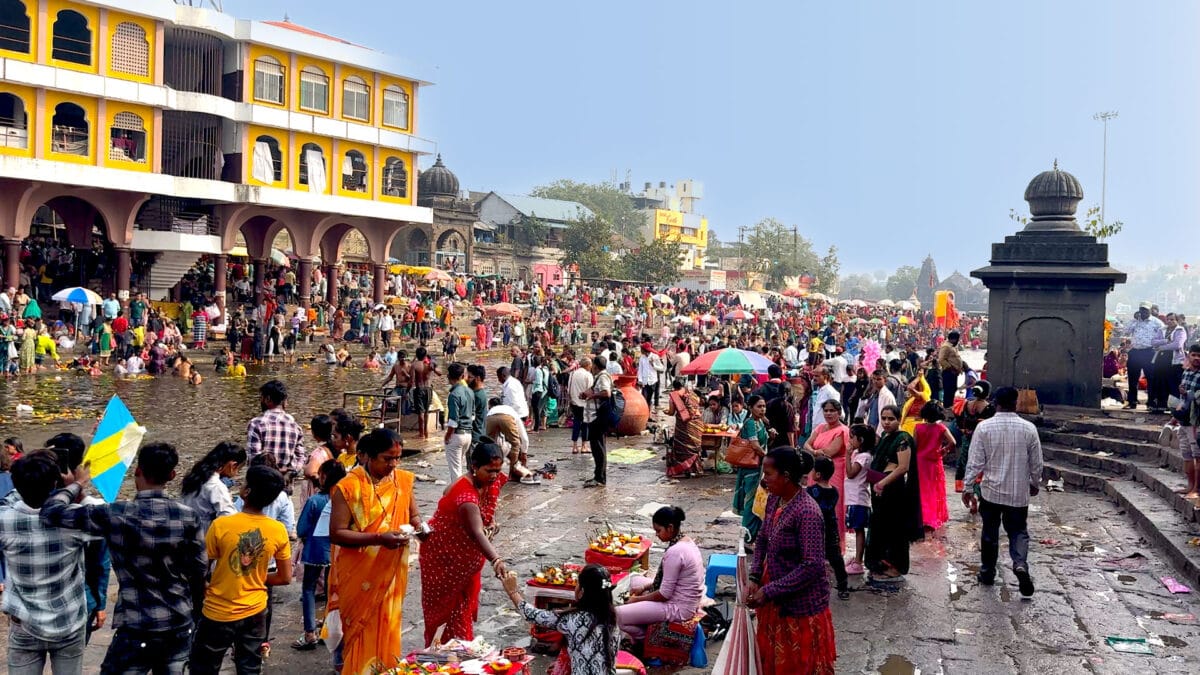
Ramkund Panchwati – Cultural and Historical Origins
The origin of the Ramkund dates back to the Treta Yuga and is linked with the epic narrative of the Ramayana.
According to legend, Lord Rama, along with his wife Sita and brother Lakshmana, spent a significant part of his 14-year exile in the Panchavati area.
The name “Panchavati” itself refers to a garden of five sacred banyan trees that gave the region its name and those trees can still be seen standing strong.
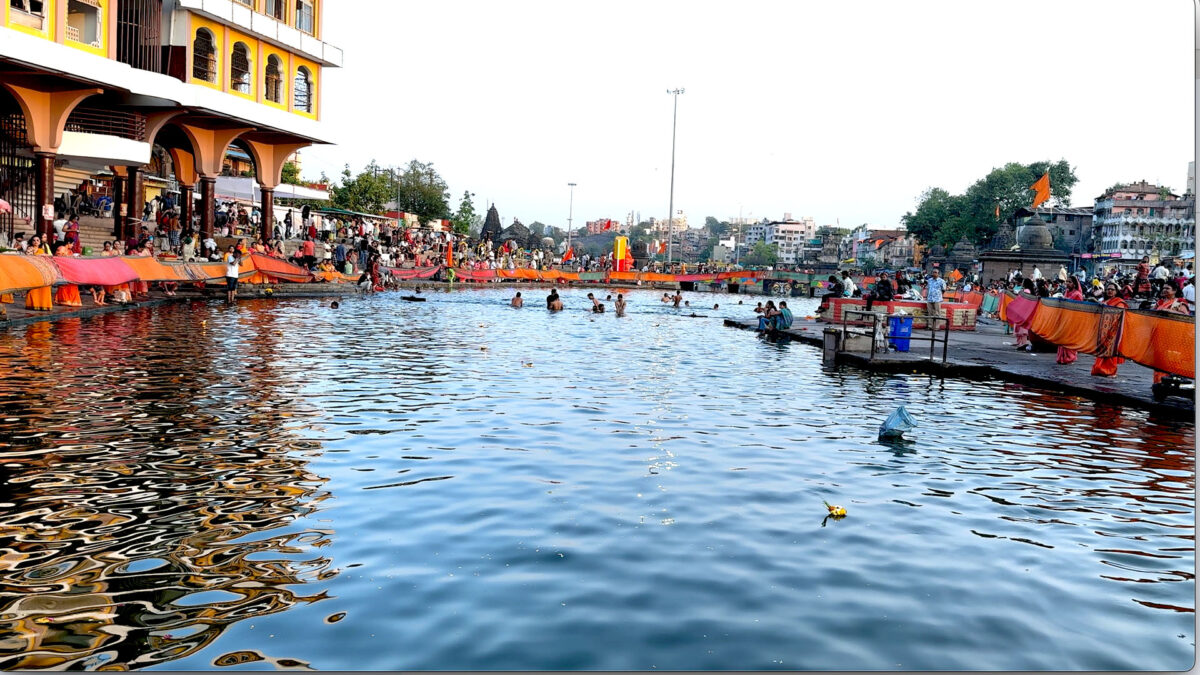
The word ‘kund’ refers to a reservoir or tank, and “Ramkund” is thus named because Lord Rama used to bath in its waters.
Lord Rama also performed the Shraadha ceremony for his father King Dashrath at this sacred spot which adds to the religious significance of the place.
Shraadha is an act of piety done to show respect, remembrance and gratitude towards one’s departed ancestors.
It is believed to be highly auspicious to immerse the ashes or mortal remains of a deceased relative at the Asthi Vilaya Sthan at the Ramkund Ghat.

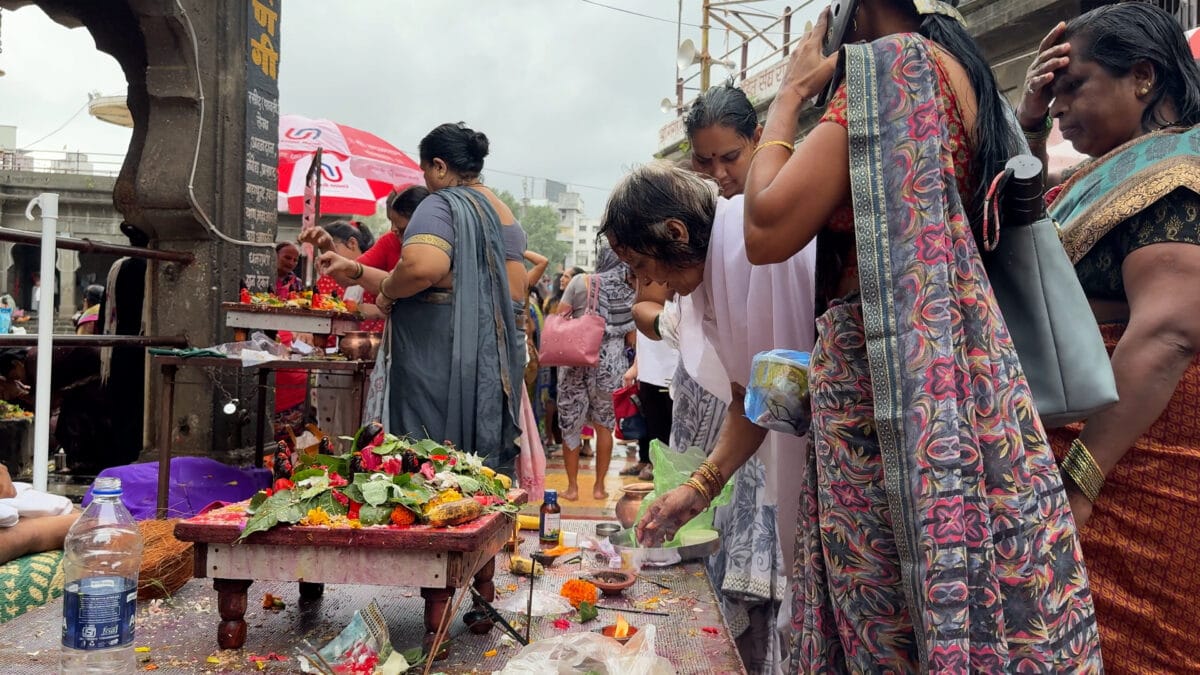
Mythological Legends related to Ramkund
Here are some some stories related to the Ramkund marking its importance and cultural significance even before the Ramayana period.
Shiva’s Atonement and Kapaleshwar Temple Legend
Local lore rooted in texts like the Padma Purana holds that Lord Shiva, burdened by the sin of brahmin-hatya, bathed in the sacred waters of the Godavari here following Nandi’s advice.
Subsequently, he installed himself in the form of a Shiva-linga atop a nearby hill, now worshipped as Kapaleshwar Mahadev.
As a mark of respect and tribute to his beloved mount and devotee, no Nandi idol stands guard before the linga – a rare feature in Shiva temples.
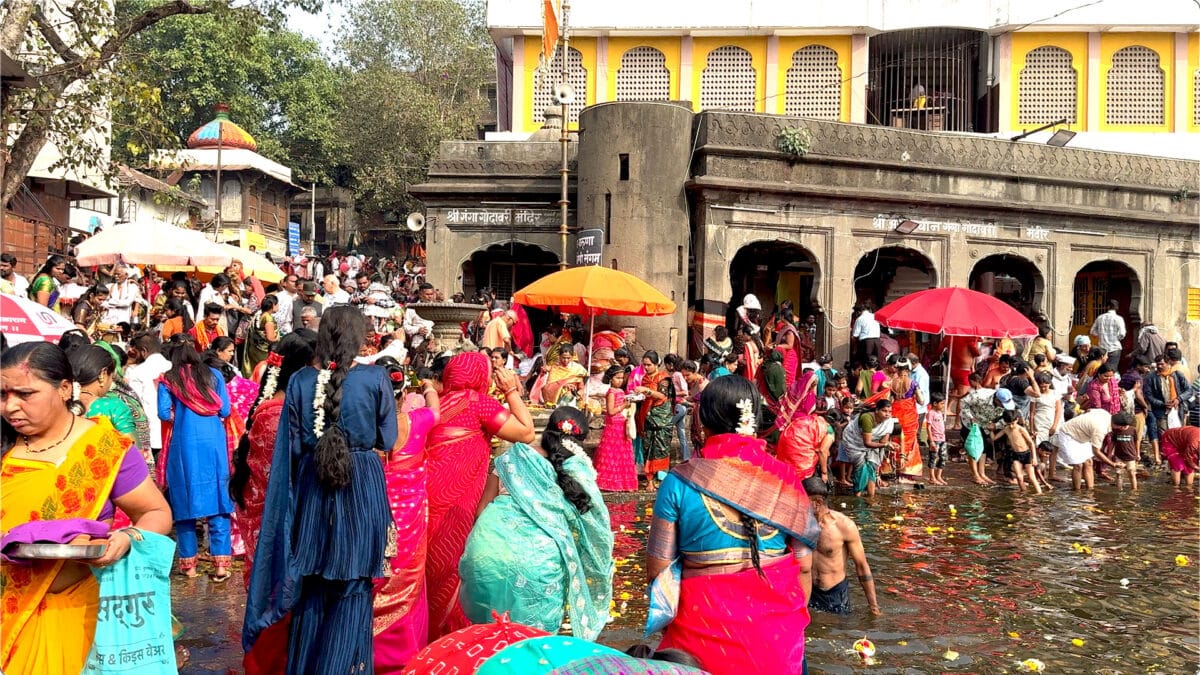
Vishnu’s Transformation into Sundar Narayan
According to regional folklore, Lord Vishnu was once cursed by Vrinda Devi and lost his divine beauty. He is believed to have bathed here in the river Godavari after which he regained his form and became known as Sundar Narayan.
A temple on the opposite bank stands in his honor, featuring intricate carvings and uniquely aligned for sunrise on March 21. This shrine, currently undergoing renovation, adds another layer to the rich tapestry of Ramkund’s mythological heritage.
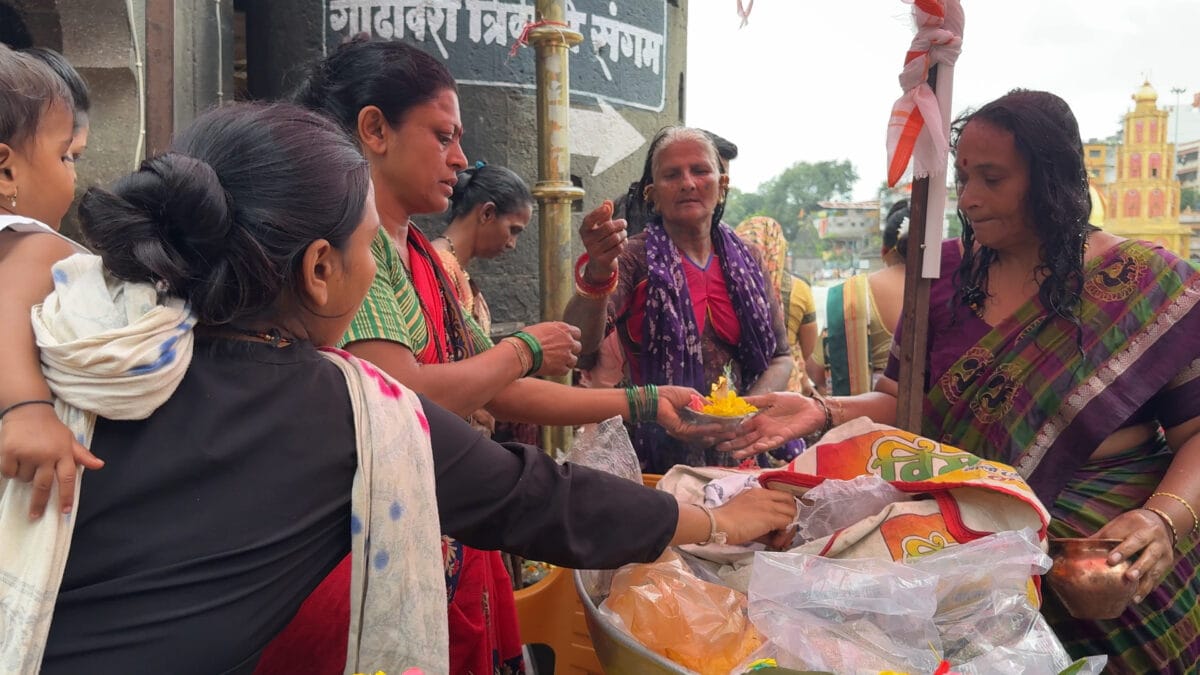
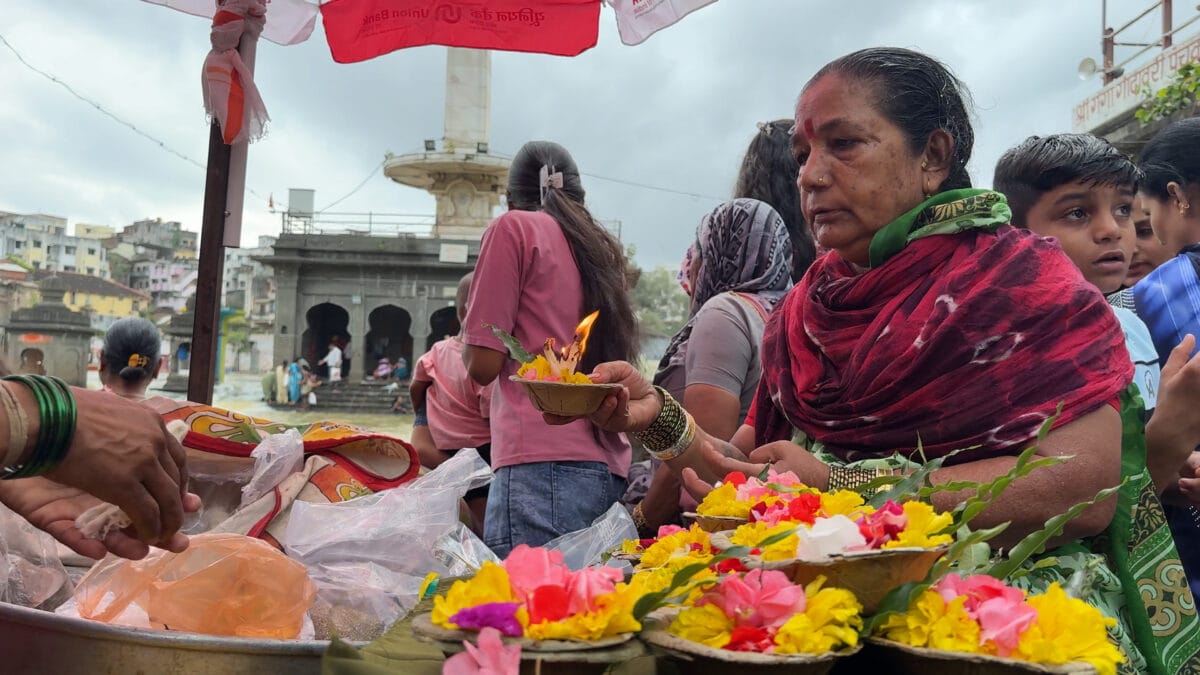
Ramkund – Architectural Features
The present-day Ramkund was constructed in the year 1696 by Chitrarao Khatarkar, a minister of the ruling Maratha empire.
The ghat is a rectangular tank measuring approximately 27 meters by 12 meters, constructed with well-cut stone steps that descend into the holy waters of the Godavari River.
The kund is flanked by intricately designed ghats and small shrines, showcasing a blend of Maratha and traditional Hindu architectural styles.
The area surrounding Ramkund includes a complex of temples and religious structures that not only support spiritual activities but also serve as a testament to India’s architectural legacy.

Notably, the ghat is surrounded by steps that make it accessible for devotees, elderly pilgrims, and sadhus alike.
The ghats are often adorned with colorful flags, marigold garlands, and oil lamps that create a spiritually charged ambience, particularly during festivals.
Ramkund During Kumbh Mela
Every 12 years, Nashik and Trimbakeswar become the combined hosts for the grand Kumbh Mela, one of the largest religious gatherings in the world.
During this auspicious occasion, Ramkund transforms into a colossal arena of devotion and celebration. Millions of devotees, sadhus, and tourists flock to the ghats to take a holy dip in the waters of the Godavari.
The Kumbh Mela in Nashik is known as the “Simhastha Kumbh Mela,” and its rituals are largely centered around Ramkund, the region of Tapovan located nearby, and the adjoining Godavari River.
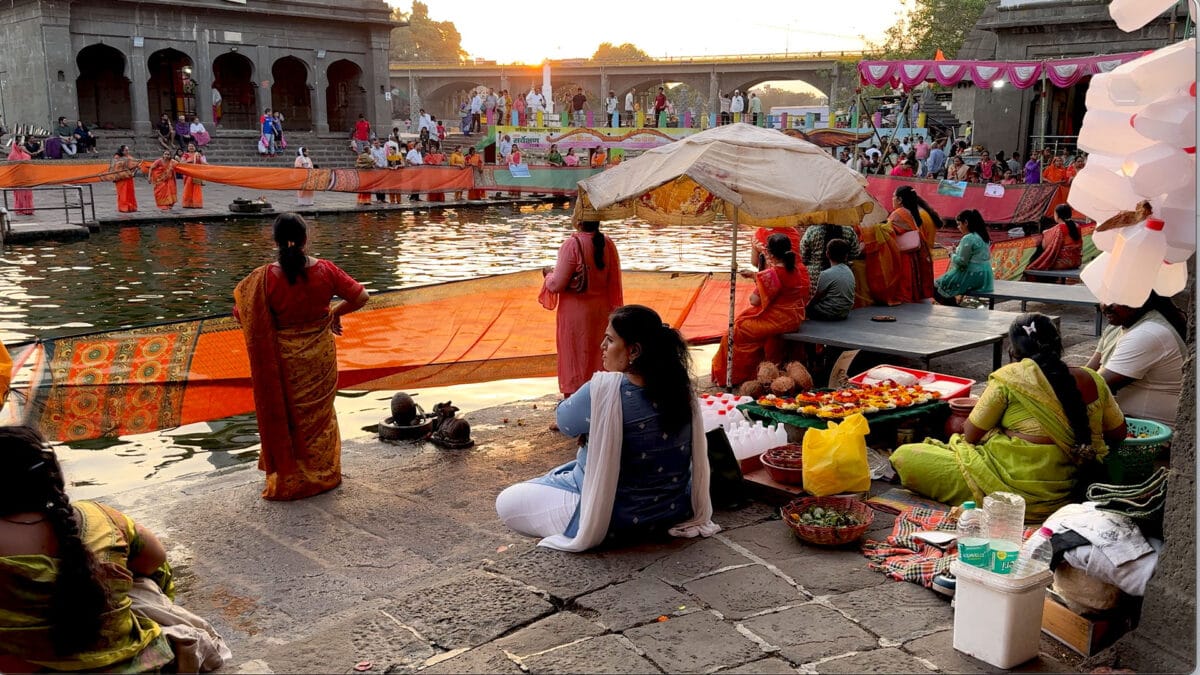
Special arrangements are made to manage the massive influx of people, including security, sanitation, and healthcare services.
The air resonates with chants, hymns, and the blowing of conch shells, creating an atmosphere of cultural fervor.
Sadhus from different sects, including the Naga Sadhus, make their grand appearance, and elaborate processions take place, marking the event’s grandeur.
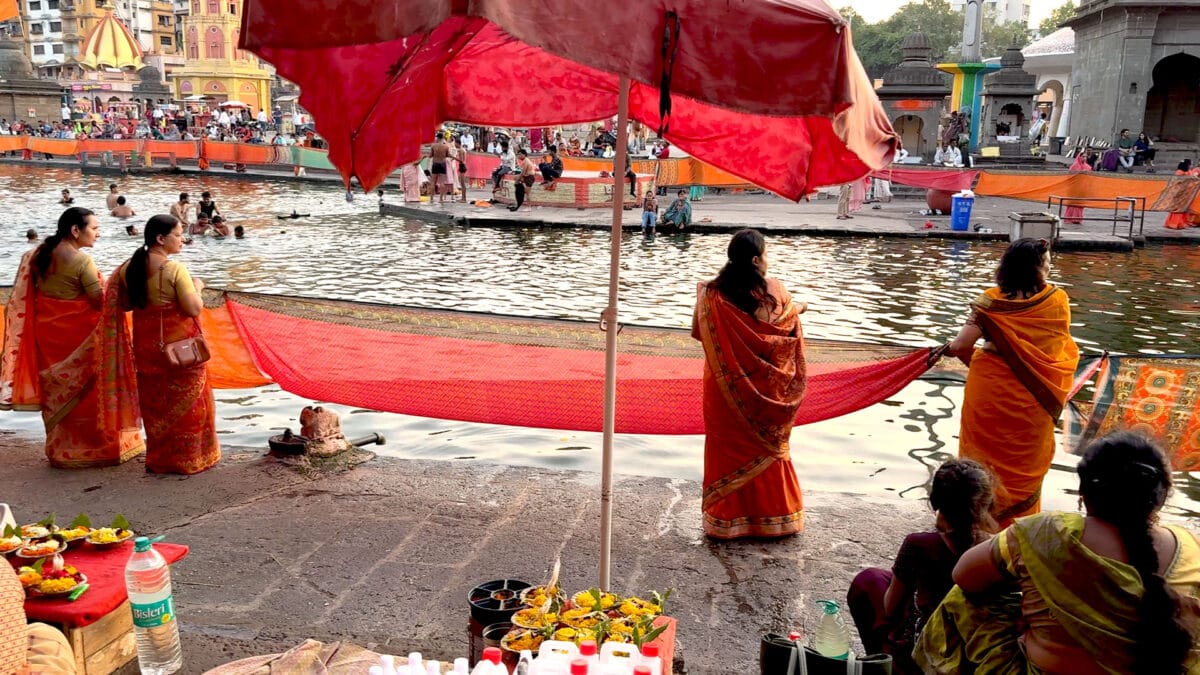
Ramkund – Temples and Landmarks nearby
Ramkund is not a standalone attraction but part of a vibrant religious and cultural landscape.
Several significant temples and landmarks surround the ghat like Shri Kapaleshwar Mahadev Temple and the Durga Devi Mandir, enhancing its appeal as a pilgrimage destination.
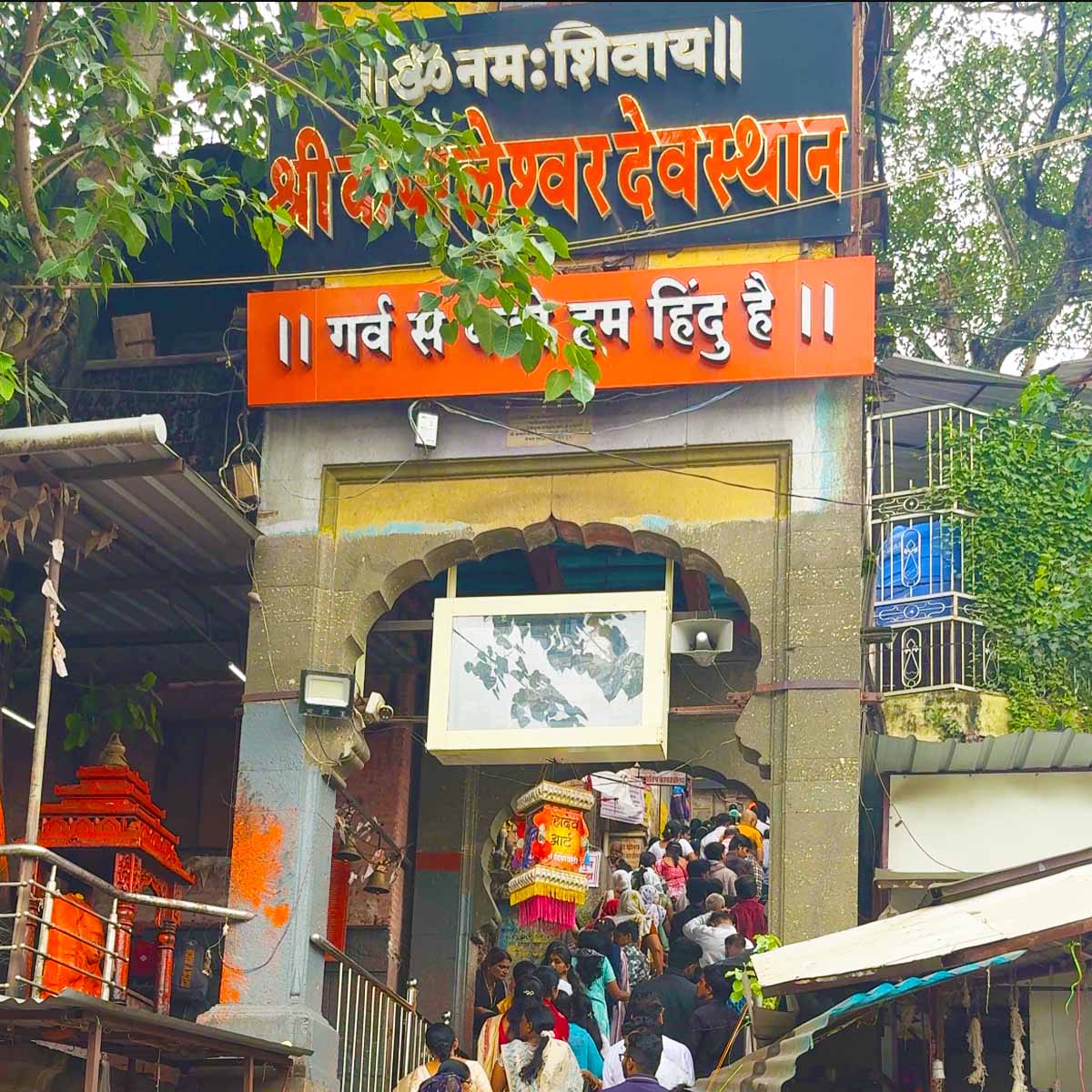
One of the most notable is the Kalaram Temple, dedicated to Lord Rama. This temple is known for its striking black stone idols of Rama, Sita, and Lakshmana and is an important site for religious observance.
The temple’s architecture, with its tall spire and detailed carvings, stands as a fine example of 18th-century Maratha temple design.
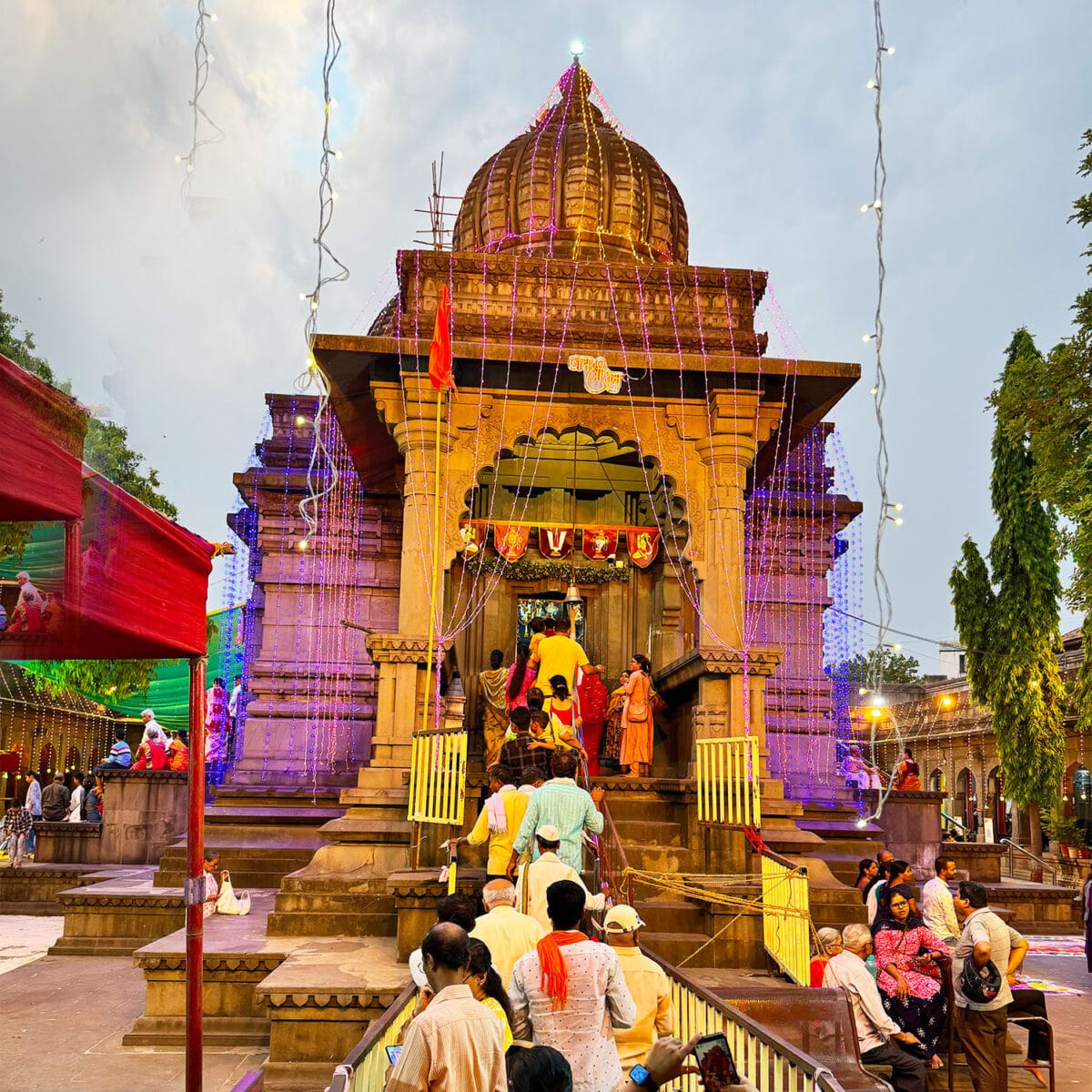
Another nearby site is the Naroshankar Temple, dedicated to Lord Shiva. Built in the 18th century, the temple showcases exquisite architecture and is famous for its ornamental detailing and sculpted arches.
Cultural and Social Relevance
Beyond its religious importance, Ramkund plays a vital role in the cultural and social life of Nashik. It serves as a venue for various traditional festivals, music performances, and public gatherings.
On regular days, one can witness a bustling scene of rituals, local vendors selling street food, flowers and religious items, and devotees engaged in meditation and prayers.
The ghat has also become a focal point for social reform activities. Spiritual leaders and organizations often conduct awareness campaigns, cleanliness drives, and charity events in the area, reinforcing the message that spirituality and social responsibility go hand in hand.
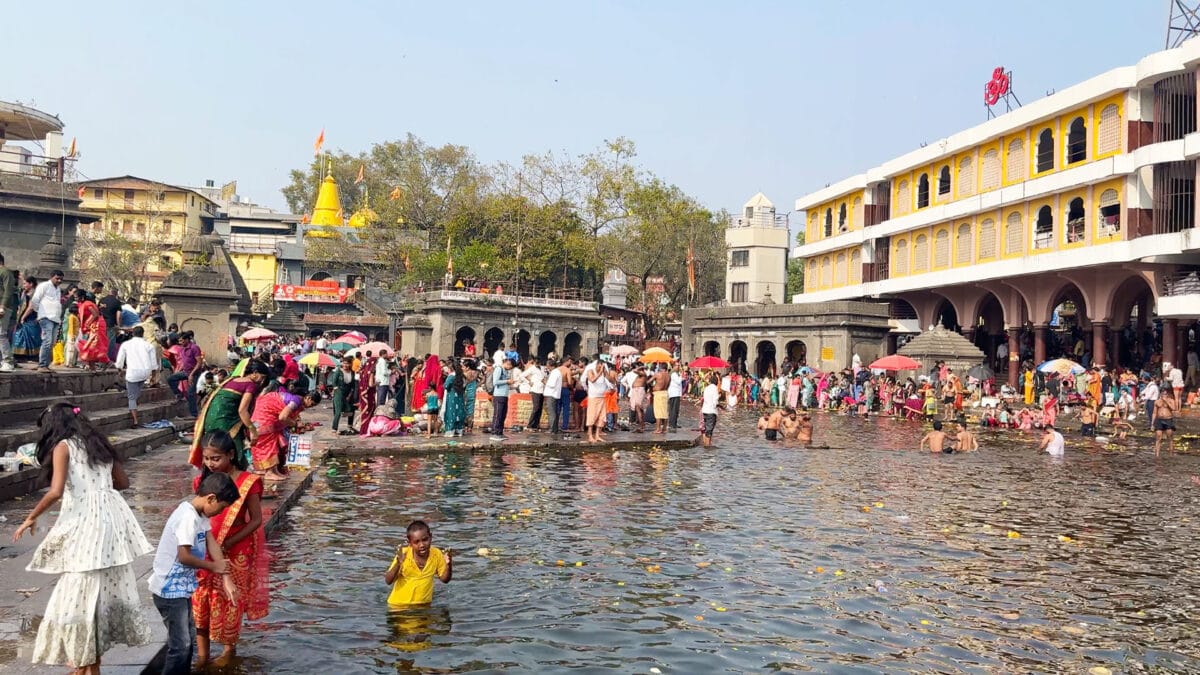
Environmental and Conservation Efforts
Given its significance and heavy footfall, maintaining the cleanliness and ecological health of Ramkund has become a pressing concern.
In recent years, several initiatives have been launched by local authorities and NGOs to clean the Godavari River and maintain the sanctity of the ghats.
These include periodic cleaning drives, installation of waste disposal units, and educational programs aimed at promoting environmental awareness among pilgrims and tourists.
Ramkund – Location and Travel Tips
Reaching Ramkund is relatively easy. It is well-connected by road and rail. Nashik Road Railway Station is about 10 kilometers away, and the central bus stand is even closer.
The Mumbai Agra highway passes through Nashik city and one can reach the Ramkund ghat in about 15 minutes from the highway.
For air travelers, the nearest airport is the Nashik Ozar Airport, which is about 25 kilometers from the city center.
The best time to visit Ramkund is during the winter months, from October to March, when the weather is pleasant and conducive for sightseeing and religious activities.
However, those looking to experience the spiritual energy of Ramkund at its peak may choose to visit during major Hindu festivals such as Ram Navami, Makar Sankranti, or during the Kumbh Mela.
The next Simhastha Kumbha Mela at Nashik and Trimbakeshwar is set to be held in year 2027.
Daily Aarti at Ramkund
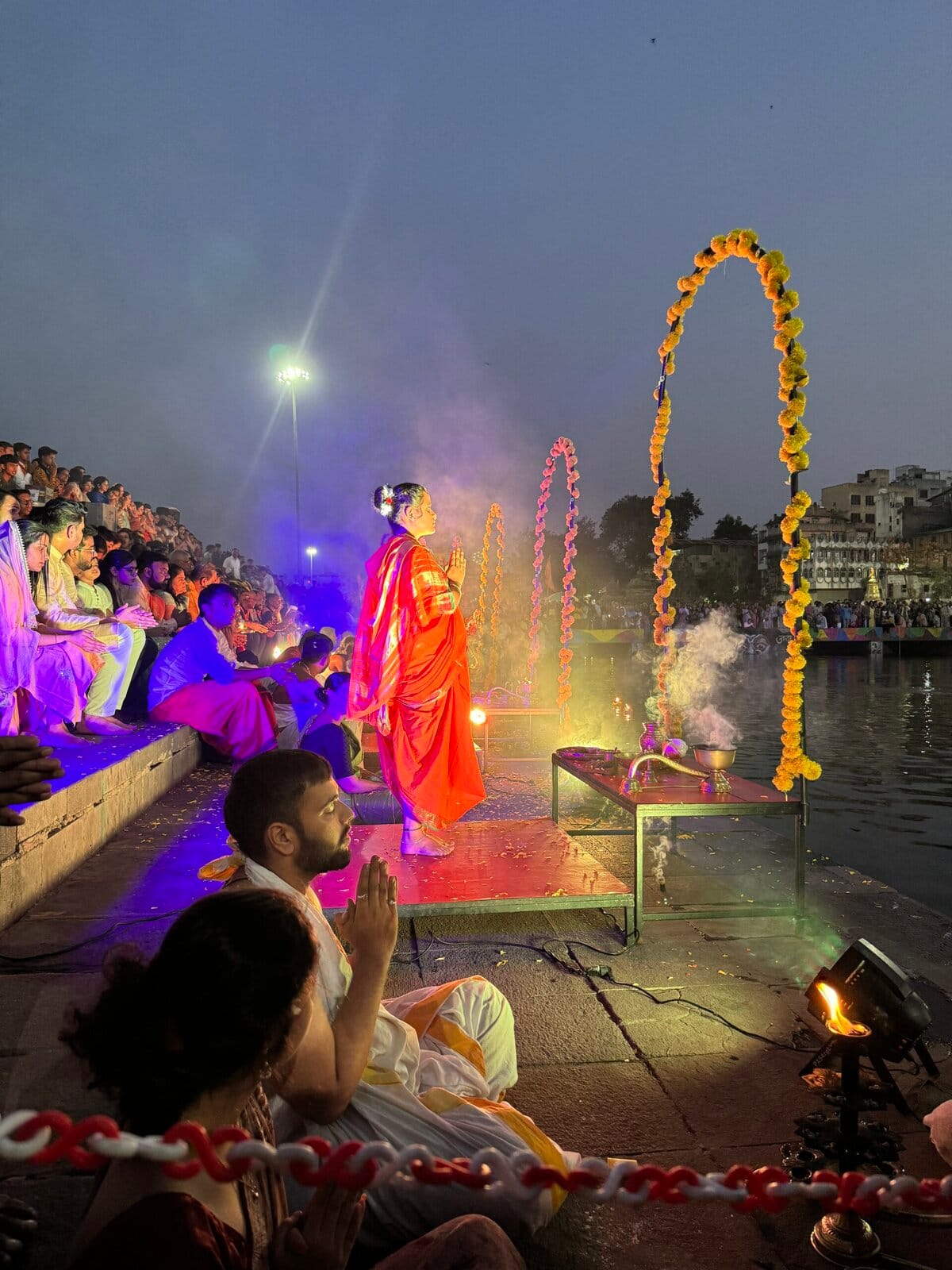
One of the most spiritually uplifting experiences at Ramkund is the daily evening aarti (ritual offering of light) performed between 7pm and 8pm.
As the sun sets and the sky takes on hues of orange and crimson, priests gather to offer prayers to the sacred river Godavari and the divine forces believed to reside within.
The ritual includes the chanting of Vedic hymns, the rhythmic ringing of bells, and the lighting of oil lamps (diyas), all set against the serene backdrop of the flowing river.
This daily aarti reinforces the sanctity of the place and also offers a moment of togetherness and spiritual connection for devotees and onlookers alike.
The sight of floating lamps drifting on the water as incense fills the air creates a deeply peaceful and memorable atmosphere.
For many, attending the aarti is a highlight of their visit to Ramkund, symbolizing the spirit of Sanatana Dharma.
Ramkund and its legacy
Ramkund is far more than a religious site—it is a living chronicle of India’s spiritual journey, a reservoir of mythological narratives, and a testament to the country’s rich cultural heritage.
Whether one visits to perform sacred rites, to seek peace and spiritual clarity, or simply to witness the confluence of tradition and devotion, Ramkund offers a unique and unforgettable experience.
In a rapidly modernizing world, Ramkund continues to stand as a serene reminder of the enduring power of Dharma and the timeless allure of India’s cultural landscapes!
Ramkund – Ganga Godavari Aarti Video
Frequently Asked Questions about Ramkund Nashik
Why is Ramkund famous in Nashik?
Ramkund is famous as the sacred bathing ghat in Panchavati where Shri Ram used to bathe during his exile.
It is also believed that Lord Rama performed the Shraddha of his father King Dashrath here.
Devotees immerse ashes of their loved ones at Ramkund, making it one of the holiest pilgrimage spots in Maharashtra.
What is the religious importance of Ramkund?
Ramkund is considered the holiest spot on the banks of the Godavari river. According to legends, Shri Ram, Lord Shiva (as Kapaleshwar Mahadev), and Lord Vishnu (as Sundar Narayan) are all connected with this sacred place. Bathing in the kund or performing rituals here is believed to be an act of punya.
Which temples are near Ramkund Nashik?
Ramkund is surrounded by many important temples in Nashik including Kapaleshwar Mahadev Temple, Sundar Narayan Temple, Kalaram Temple, Naroshankar Temple, and Durga Devi Mandir. Together they form a vibrant religious circuit for pilgrims visiting Panchavati.
Can tourists visit Ramkund?
Yes, Ramkund is open to both devotees and tourists throughout the year. Visitors can witness daily rituals, the evening Ganga Godavari Aarti, and experience the cultural and spiritual ambience of Nashik’s most sacred ghat.
When is the best time to visit Ramkund in Nashik?
The best time to visit Ramkund is from October to March when the weather is pleasant. However, for those seeking a spiritual experience, festivals like Ram Navami, Makar Sankranti, and especially the Simhastha Kumbh Mela (next in 2027) are the most significant times.
How to reach Ramkund in Nashik?
Ramkund is located in the heart of Nashik city. It is about 10 km from Nashik Road railway station, 25 km from Ozar Airport, and just 15 minutes from the Mumbai-Agra highway. Autos, buses, and taxis are easily available to reach the ghat.
What rituals are performed at Ramkund?
The most important rituals performed at Ramkund are Asthi Visarjan (immersion of ashes), Shraddha ceremonies for ancestors, and daily offerings to the Godavari river. The evening aarti at Ramkund is a must-watch for all visitors.
- Shagun Dining Hall Nashik: Delicious Gujarati Thali at Just Rs 210/- - 24 September 2025
- Sarvapitri Amavasya 2025: Thousands Perform Shradh at Ramkund in Nashik - 22 September 2025
- Pitru Paksha 2025: Dates, Shradh Rituals & Sarvapitri Amavasya in Nashik - 19 September 2025
